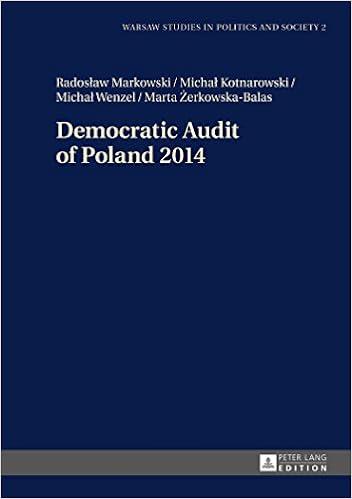
Question 3 (23 points) The medical clinic Saint Lucy is specialized in the treatment of urgent eye-related problems. There are 3 specialists working in the clinic. To simplify the analysis, we assume that these specialists work 24 hours per day, 7 days per week. Patients arrive at the clinic in a random way and the time between two arrivals follows an exponential distribution with an average of 7.5 minutes. The consultation with the specialist takes on average 15 minutes (following an exponential distribution). If no specialist is immediately available, patients have to wait in the waiting room. However, there is a limited waiting capacity of 2 patients. If more than 2 patients have to wait, these additional patients are always referred to the main hospital. You are specialized in analyzing waiting line problems, and you have prepared the following Excel spreadsheet which correctly reflects the situation at the medical clinic and which calculates different performance measures. Answer the following questions, taking into account that some information (in this case the input information c, K, R., Rp and some results) have been left out. Note we use the hour as time unit in the spreadsheet. Basic Inputs: Number of Servers, c = Queue Capacity, K = Arrival Rate, R = Service Rate Capacity of each server, R = Arrivals: Average Rate Joining System (R) = 7.3934 Average Rate Leaving Without Service (R.P.) = Customers who Balk: Probability that System is Full (P.) = The Waiting Line: Average Number Waiting in Queue (/) = 0.2654 Average Waiting Time (T) = Q: Probability of more than 0 customers waiting Service: Average Utilization of Servers = Average Number of Customers Being Served (1) = The Total System (waiting line plus customers being served): Average Number in the System (1) = Average Time in System (T) = IMPORTANT NOTE : When asked to explain your calculations, indicate how you would calculate the number using only the information given here and without using the Excel file. 1) Indicate the correct values for the four input numbers (c : number of servers; K: capacity of the stock buffer, Ri : arrival rate; Rp : service rate for one server) and explain these values. (6 points) 2) What is the average total time in the system (T) (i.e., time in the waiting line and time with the specialist)? Explain your calculations. (5 points) 3) What is the utilisation rate for the specialists? Explain your calculations. (4 points) 4) How many patients on average are with the specialists? Explain your calculations. (4 points) 5) Suppose now that the medical protocol has changed and that there is no limit on the waiting capacity, i.e., patients can always wait at the clinic and are never sent to the hospital. For this new situation, what is the utilisation rate of the specialists? Explain your calculations. (4 points) Question 3 (23 points) The medical clinic Saint Lucy is specialized in the treatment of urgent eye-related problems. There are 3 specialists working in the clinic. To simplify the analysis, we assume that these specialists work 24 hours per day, 7 days per week. Patients arrive at the clinic in a random way and the time between two arrivals follows an exponential distribution with an average of 7.5 minutes. The consultation with the specialist takes on average 15 minutes (following an exponential distribution). If no specialist is immediately available, patients have to wait in the waiting room. However, there is a limited waiting capacity of 2 patients. If more than 2 patients have to wait, these additional patients are always referred to the main hospital. You are specialized in analyzing waiting line problems, and you have prepared the following Excel spreadsheet which correctly reflects the situation at the medical clinic and which calculates different performance measures. Answer the following questions, taking into account that some information (in this case the input information c, K, R., Rp and some results) have been left out. Note we use the hour as time unit in the spreadsheet. Basic Inputs: Number of Servers, c = Queue Capacity, K = Arrival Rate, R = Service Rate Capacity of each server, R = Arrivals: Average Rate Joining System (R) = 7.3934 Average Rate Leaving Without Service (R.P.) = Customers who Balk: Probability that System is Full (P.) = The Waiting Line: Average Number Waiting in Queue (/) = 0.2654 Average Waiting Time (T) = Q: Probability of more than 0 customers waiting Service: Average Utilization of Servers = Average Number of Customers Being Served (1) = The Total System (waiting line plus customers being served): Average Number in the System (1) = Average Time in System (T) = IMPORTANT NOTE : When asked to explain your calculations, indicate how you would calculate the number using only the information given here and without using the Excel file. 1) Indicate the correct values for the four input numbers (c : number of servers; K: capacity of the stock buffer, Ri : arrival rate; Rp : service rate for one server) and explain these values. (6 points) 2) What is the average total time in the system (T) (i.e., time in the waiting line and time with the specialist)? Explain your calculations. (5 points) 3) What is the utilisation rate for the specialists? Explain your calculations. (4 points) 4) How many patients on average are with the specialists? Explain your calculations. (4 points) 5) Suppose now that the medical protocol has changed and that there is no limit on the waiting capacity, i.e., patients can always wait at the clinic and are never sent to the hospital. For this new situation, what is the utilisation rate of the specialists? Explain your calculations. (4 points)







